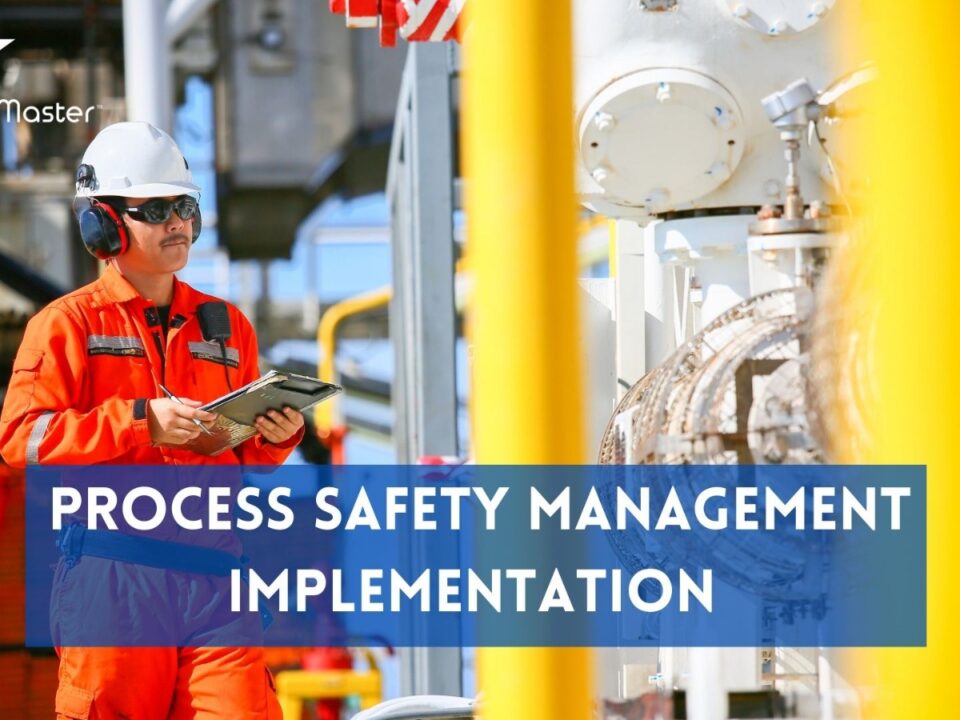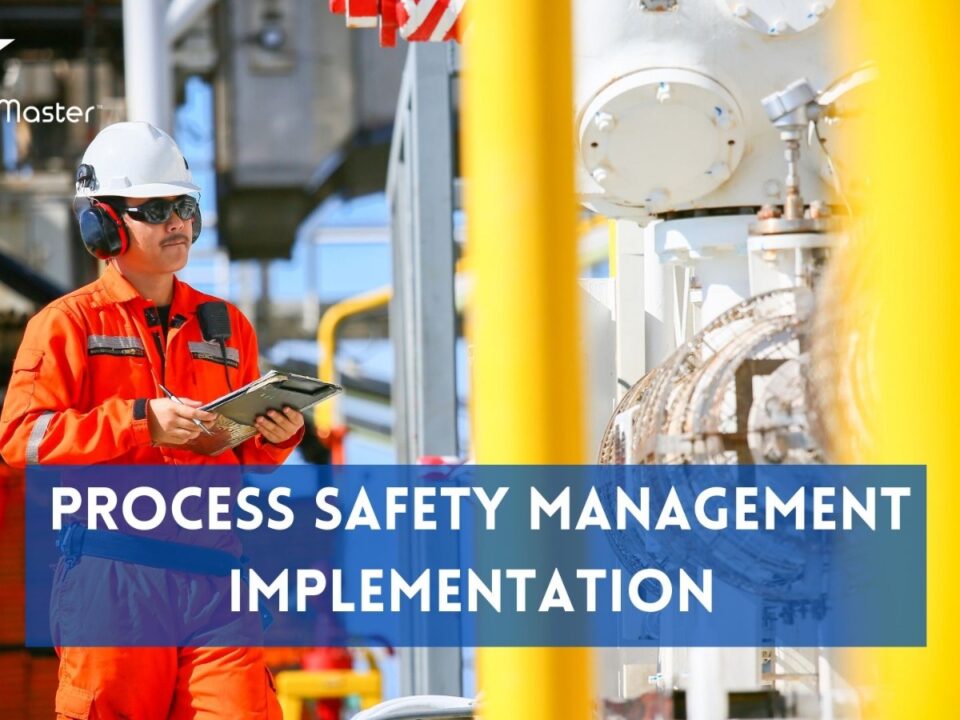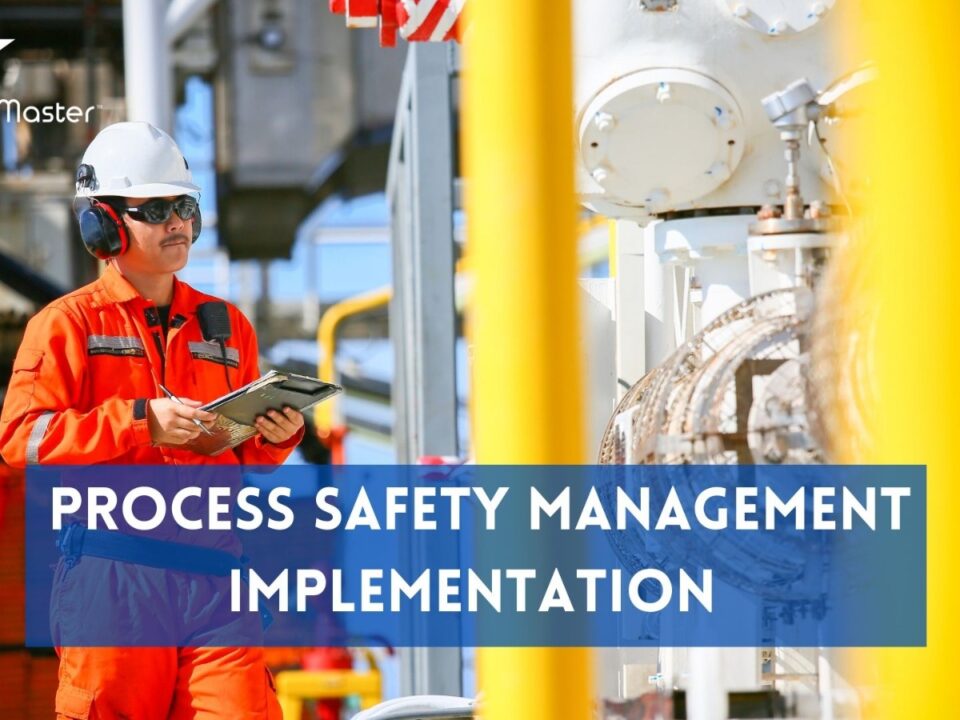Overview of Process Safety Management- TheSafetyMaster

Unveiling the Hidden Fire Hazards – How Regular Audits and Assessments Can Save Businesses
November 18, 2023
HAZOP Study- A Strategic Approach to Identifying and Managing Operational Hazards in Complex Systems
November 21, 2023Process Safety Management is an approach to create a safe system for the people that work in the process, and for the surrounding environment. It is designed as a systematic approach to manage physical threats, health and safety regulations and standards, training requirements, and compliance. As this is a new way of managing safety it also creates new challenges for businesses, especially small to medium-sized businesses.
Process Safety Management (PSM) is the set of actions and procedures implemented by the owners, operators, designers, and engineers of an organization or a process in order to safely manage the risks involved in their operations. Process Safety Management consists of the implementation of the policies and rules placed by different organizations on how to operate processes to ensure that the safety guidelines are met. It essentially means keeping people, property, and the environment safe from harm during the process. Process Safety Management or PSM is a set of principles, guidelines, and procedures which work together to identify, prevent and control industrial risks that may cause an explosion, fire, or release of harmful gas. The main purpose of PSM is to ensure the safe operation of existing chemical processes.
Process Safety Management (PSM) is an approach to managing risks in a number of industries, including manufacturing and Chemical Production. Process Safety Management focuses on the safe design, construction, operation, and decommissioning of facilities. An important factor in successful PSM implementation is the use of checklists and program standards. Businesses can achieve multiple benefits from implementing process safety management. These benefits include increased plant and worker safety, improved process performance, and better compliance with regulations, such as OSHA.
The management of processes with hazardous materials is essential to keep a safe environment for the people who work in the plant, as well as to protect the environment and save natural resources. Implementing process safety management can benefit businesses by providing an environment focused on safety, which minimizes and prevents incidents, fatalities, and evacuations. Process Safety Management is a key safety system for eliminating process hazards. It is a collection of management practices that together can provide protection to people involved in the former and neighboring processes from fatal harm, injury, and damage. Process safety management also ensures the protection of equipment, environment, and facilities where a process is carried out. It helps in avoiding catastrophic process accidents that can cause serious loss of production capacity, financial loss due to downtime, environmental degradation, and oftentimes loss of life.
THE 14 ELEMENTS YOU SHOULD INCLUDE IN YOUR PSM PROGRAM

EMPLOYEE PARTICIPATION
One of the most effective ways to make sure that you are running a safe operation is employee participation. It’s important, in fact, it has become an industry standard to have weekly safety meetings at all levels of the workplace. In many cases, you will see meeting agendas with titles that refer to employee involvement at some level in a second or third bullet point.
PROCESS SAFETY INFORMATION
Process Safety Management (PSM) refers to an organization’s ability to manage the risks created by hazardous processes. These risks can lead to incidents, accidents, and even catastrophic events that harm people, destroy assets or impact the environment. When a process poses threats of this magnitude, some type of formal PSM system must be in place to mitigate those changes.
PROCESS HAZARD ANALYSIS
Process Hazard Analysis (PHA) is the systematic identification, evaluation, and control of the hazards of a particular process. Its primary purpose is to identify hazards that cause injuries or deaths within a facility, during product processing operations.
OPERATING PROCEDURES
Operating procedures are the step-by-step details that guide operators and others involved in managing a process. Operating procedures can be formal or informal, depending on the industry and company. A formal operation procedure typically is part of a written manual for operating a process. An informal operating procedure may just be an unwritten policy and procedure that employees follow to manage processes.
TRAINING
Safety Training is a critical part of the operator’s role in managing risks associated with operating the process. In this role, you are an integral part of the team that develops, implements, and communicates the process safety management plan. Process Safety Management training can be an important aspect of plant safety. It may be required to complete during job interviews or it may be just a must-have for your resume. Regardless, an individual with knowledge of this subject will see immediate growth in the industry.
CONTRACTORS
Contractors have a direct impact on process safety and health management programs (PSH & PHM). Successful contractors are those who understand not only the work they perform but the connection to overall PSH & PHM program strategies. Contractors who understand their role, as well as when to take action, communicate with site employees, and know where to find information can improve safety for all.
PRE-STARTUP SAFETY REVIEW
Pre-Startup Safety Review, the review of a process to be started up. This is usually performed by a Process Safety Management (PSM) consultant or contractor or by an employee operating under the supervision of a PSM competent person. The Pre-Startup Safety Review is required to be conducted before feed streams are placed in the unit for the first time and is also required at significant modification to the unit.
MECHANICAL INTEGRITY
Mechanical Integrity (MI) is the state of being intact and able to perform its required functions. It is a primary focus for metal structures, groups of components, and piping systems in industrial plants that handle major process hazard fluids like hydrocarbons, polymers, caustics, or flammable liquids due to their critical role in plant operations.
HOT WORK PERMIT
A hot work permit is a document that outlines the specific grades of steel or other materials that can be worked on. This permit needs to be documented, signed, and filed offsite or brought into the facility. There are a number of locations where personnel may document the hot work permit. The document must remain with the facility but can be stored anywhere on-site.
MANAGEMENT OF CHANGE
The management of change is a long-established process safety concept and framework that has recently been the focus of greater attention in the chemical industry because of increased regulatory emphasis on human factors issues. It was originally applied to major shutdowns for plant modification, but it is now used more broadly to address any change in plant equipment, procedures, or processes. Management of change (MOC) involves systematic evaluation of hazards associated with a proposed change, identification, and analysis of risks, an assessment of implementation options to minimize hazards and risks, and preparation for safely implementing changes.
INCIDENT INVESTIGATION
Incident investigations are critical to the health and safety of any facility that could have an on-site release of a toxic or hazardous chemical. The investigation is designed to determine the causes of the incident. The primary purpose of this investigation is to make recommendations to prevent future incidents. The facility then must implement changes that will make the whole system safer.
EMERGENCY PLANNING AND RESPONSE
Emergency planning and response (EPR) is a focused effort, principally driven by facility management, to mitigate the potential for significant injury or death as a result of unexpected events. An unexpected event is an unplanned consequence of the normal and expected use of a chemical process, which requires immediate attention because it causes harm to some individuals or threatens public health and safety.
COMPLIANCE AUDITS
A compliance audit is a formal assessment of the organization’s compliance with the safety and health requirements as defined by a regulatory agency. The objective of a compliance audit is to determine if an organization has met required standards. This includes reviewing the contents of the management program, assessments, inspections, training documentation, access authorization procedures, incident investigations, and any other records related to the safety program.
TRADE SECRETS
The most important aspects of Process Safety and Risk Management are often protected as trade secrets for competitive reasons. Trade Secrets – The key to identifying areas of improvement, when a company puts aside competition and trades it for cooperation, the company can exploit the knowledge that individuals cannot see because it is hidden in the process.
HOW WE CAN HELP
• Online/Onsite Training
• Audit and Documentation
• Process Safety Management Analysis
To know more details, please contact us at info@thesafetymaster.com or +91 7665231743.




